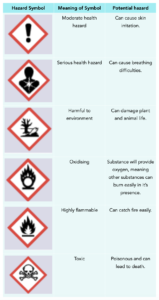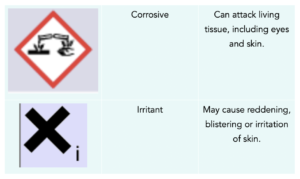Detection, Hazards & Risks (GCSE Chemistry)
Detection, Hazards & Risks
Instrumental Methods of Detection
- Flame tests are chemical tests. Flame tests are chemical tests which can give us useful information. They enable us to identify different metal ions.
- Chemical tests may be inaccurate. Chemical tests such as flame tests may not be the most accurate method of identifying substances.
- Instrumental methods are accurate. Instrumental methods use machines, which are more accurate than flame tests. They are also more sensitive, precise and rapid.
- Flame emission spectroscopy is an instrumental method. An example of an instrumental method is flame emission spectroscopy, which identifies different ions in mixtures.
Hazards and Risks
In chemistry GCSE, we carry out a lot of experiments. This brings the risk of many hazards, which can cause harm to someone or damage something else.
Therefore, we use hazard symbols to indicate the potential danger the substance can cause.


Risks and Precautions
- A risk is the chance that a hazard may cause harm. You may be asked to evaluate risks, thinking about the possible causes and effects of a potential hazard.
- A precaution is something one does to reduce the risk of a hazard causing harm. For example using a lower concentration of hazardous substances or wearing protective eye equipment.
- A risk assessment can be carried out. In a risk assessment, all the possible risks and hazards are identified. Suitable precautions are then suggested and put in place to provide a safe working environment.





Still got a question? Leave a comment
Leave a comment